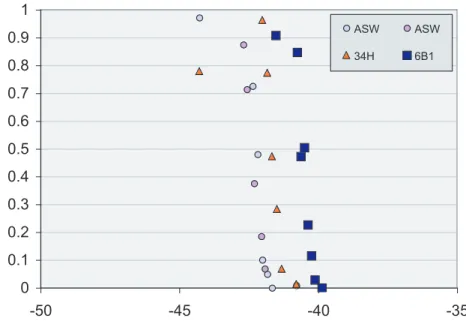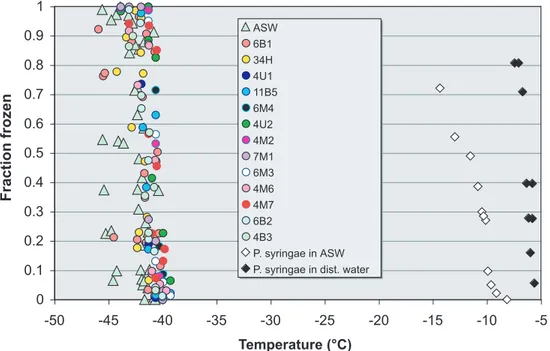High-resolution ice nucleation spectra of sea-ice bacteria: implications for cloud formation and life in frozen environments
Texto
Imagem



Documentos relacionados
(2009) have observed enrichment of surface-active substances in the SML, relative to bulk water, by a factor of up to 2 at wind speeds exceeding the av- erage global wind speed over
In order to study the sensitivity of this eect on the radiative characteristics of the ice cloud, two types of additional ice clouds were modelled: cirrus and contrails, the
4, we finally compare the magnitude and pacing of past temperature changes reconstructed from deep ice cores to the changes simulated by coupled ocean-atmosphere-sea- ice models
The reconstructions are based on a multilinear regression of forecasted ice concentration, level ice thickness, ridge density, ice speed and an additional factor which is based,
ther investigations of surface structure and snow cover on seasonal sea ice in parallel to measurements of driving pa- rameters like heat flux, radiation, ice temperature and
To investigate the influence of snow depth, sea ice density, and area on sea ice thick- ness and volume estimates we use freeboard retrievals from ICESat, together with dif-
For these rea- sons, a metric based on the 1979–2010 SSIE trend must cer- tainly account for these effects, given that (1) only one ob- served climate realization is available,
Furthermore, the high- est ionic concentrations were also found in this layer, and it appears reasonable to suggest that unfractionated sea salt was present 17 cm from the